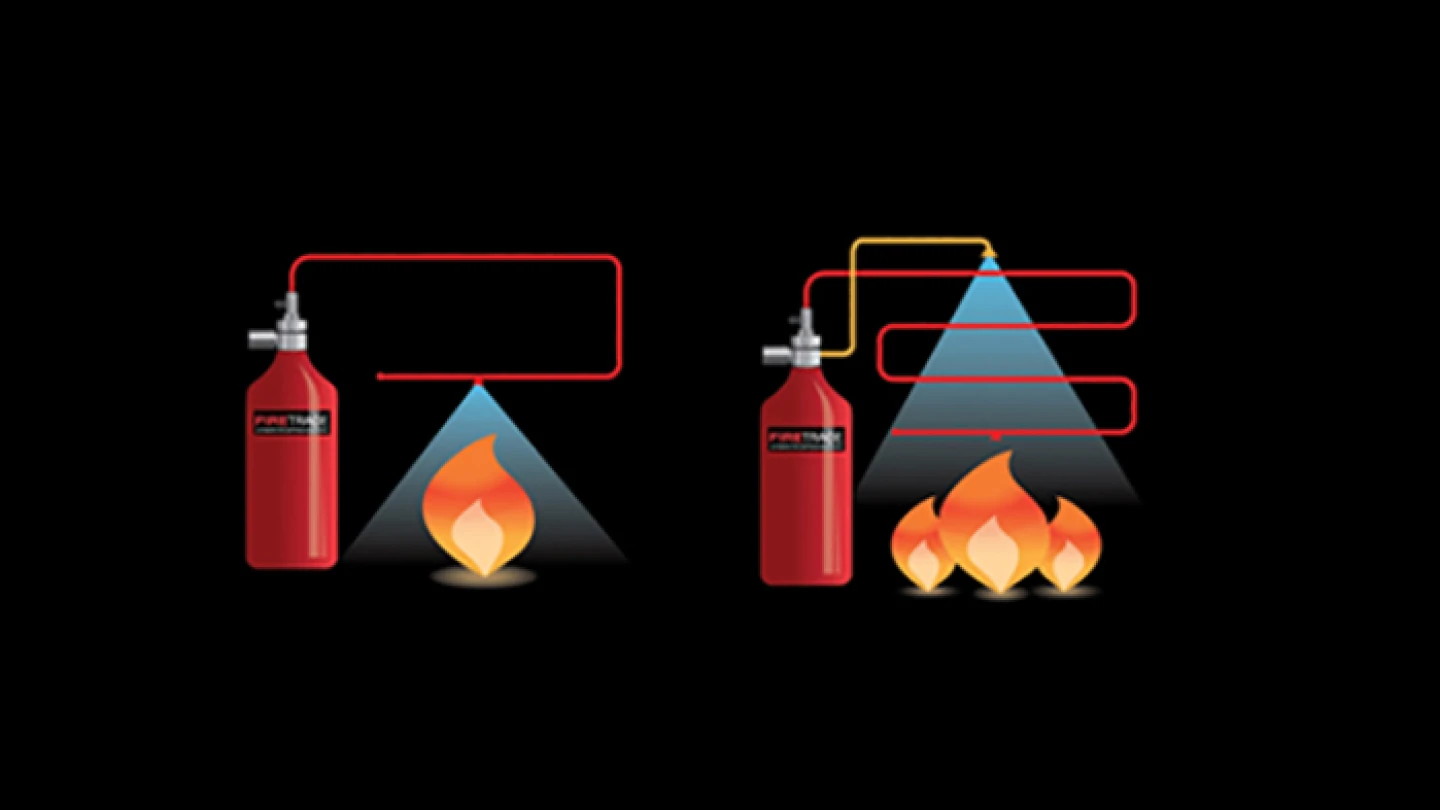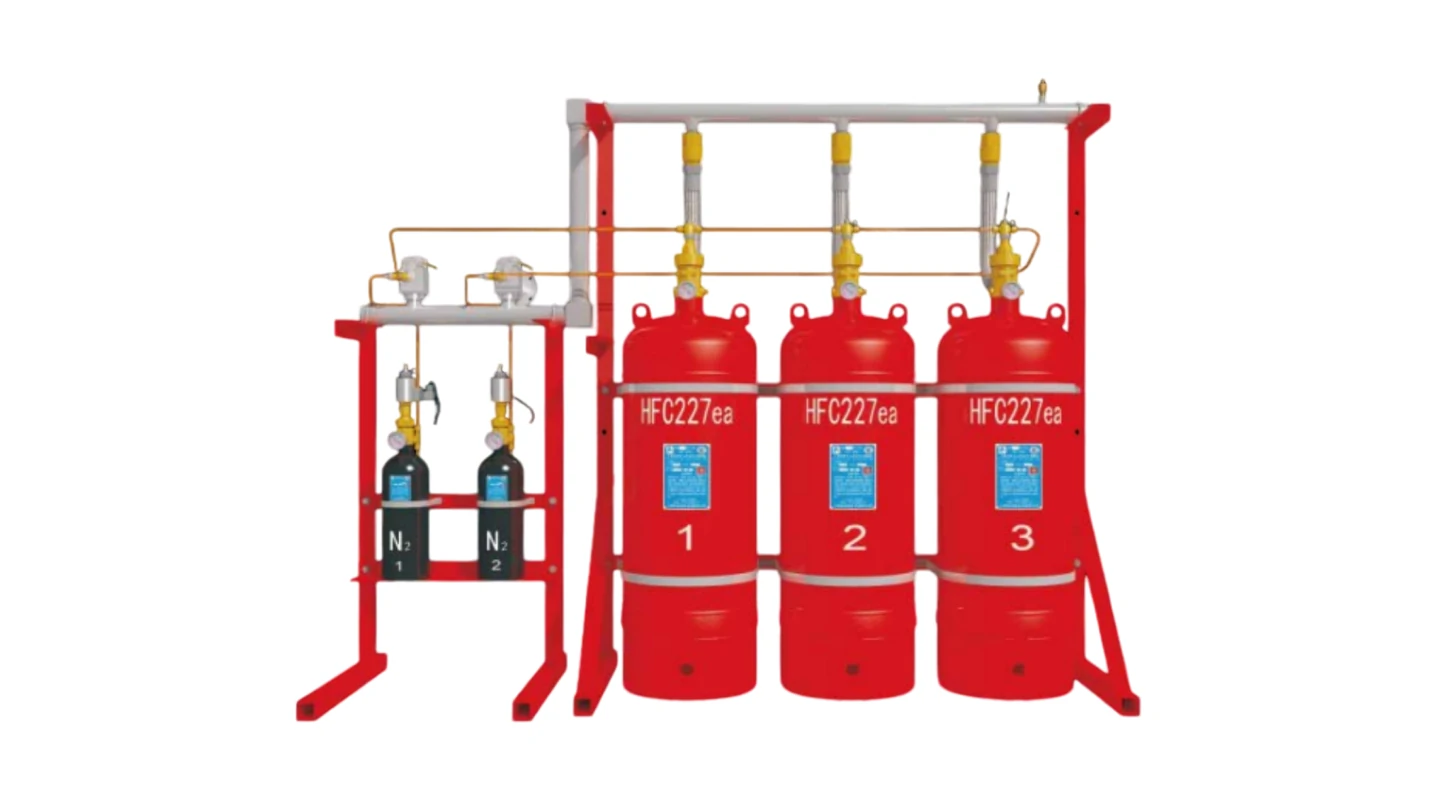In today’s fire protection field, clean agents are increasingly emerging as the ideal choice for extinguishing fires in many locations. Are you curious about what these amazing clean agents are and what makes them so uniquely appealing?
What is a clean agent
The National Fire Protection Association (NFPA) in the United States has clearly stated that clean agents possess unique properties. They are non-conductive, exist in a volatile or gaseous state, and do not leave any residue after extinguishing fires. This characteristic makes them stand out in fire protection applications in many special locations.
Clean agent fire suppression systems employ advanced fire extinguishing technologies that release chemical gases or inert gases to precisely suppress fires at their initial stage. They have demonstrated exceptional fire extinguishing efficacy in various types of fires, including Class A solid fires, Class B liquid fires, and Class C electrical fires. When a fire occurs, these special gases quickly fill the fire scene, acting like an invisible barrier that interrupts the chain reaction of combustion and prevents the flames from spreading further.
How does a clean agent extinguish fires?
The working principle of clean agents is essentially the same as that of other fire-extinguishing media. They use fire-suppressing substances to disrupt or remove any one or more components of the combustion triangle, also known as the “fire triangle,” to achieve the effect of extinguishing fires.

Clean agent differ from water, which primarily works by removing heat. Most clean agent gas suppression system mainly inhibit fires by reducing the oxygen available for combustion, followed by lowering the temperature at the fire scene and suppressing the chemical chain reaction. Some clean agents primarily absorb heat at the fire scene, followed by reducing oxygen concentration and suppressing the chemical chain reaction.
Clean agent system is typically supplied by pressurized gas or liquid steel cylinders. When this pressurized gas is released, it expands rapidly and undergoes a process of “adiabatic cooling,” which reduces heat through pressure changes caused by volume expansion. This cooling is the primary mechanism for heat removal.
These systems can provide protection through “total flooding” or “local application” methods.
What types of clean agent gas suppression system is there?
FM-200 fire suppression system
FM-200, also known as HFC-227ea, is a chemical fire suppressant primarily used for extinguishing fires. When exposed to high temperatures, it decomposes to release fluorine atoms, which combine with free radicals in the combustion reaction, breaking the chain reaction and achieving the goal of extinguishing the fire. For instance, during an electrical fire, FM-200, once released, can quickly suppress the flames and prevent the spread of the fire. FM-200 is commonly used to protect electronic equipment and electrical facilities, such as computer rooms, switchgear rooms, and communication centers.
Inert gas fire suppression systems
Such as IG-541 (Inergen), are a type of fire extinguishing agent that is a mixture of nitrogen, argon, and carbon dioxide in specific proportions. They suppress combustion by reducing the oxygen concentration in the fire area, achieving fire extinguishing effects. When IG-541 gas is released into the fire scene, it rapidly lowers the oxygen concentration to around 12.5%, below the standard for combustion, thereby extinguishing the flames.
Inert gas fire suppression systems are non-toxic to humans and are suitable for densely populated areas, such as bank lobbies, library reading rooms, and hospital wards.
Carbon Dioxide Fire Suppression System
Carbon dioxide fire suppression system primarily achieve fire extinguishing effects through asphyxiation. When liquid carbon dioxide is discharged, it rapidly vaporizes and expands in volume, displacing a large amount of oxygen within the combustion area and reducing the oxygen concentration. Additionally, carbon dioxide can absorb some heat, providing a cooling effect, which contributes to extinguishing the fire.
Carbon dioxide fire suppression system is commonly used to extinguish fires involving combustible liquids and gases, as well as electrical fires. For instance, in places like gas stations and chemical warehouses, carbon dioxide fire suppression system can effectively control fires. However, due to the potential hazards to human health from high concentrations of carbon dioxide, special safety measures must be taken when using these systems in occupied areas. This includes installing gas concentration monitoring devices and emergency ventilation equipment.
What is the best clean agent fire suppression system?
There is no absolute “best” clean agent suppression system, as its applicability depends on a variety of factors.
When discussing which clean agent suppression system is the most effective, a comprehensive consideration of various factors is necessary. First and foremost, the type of fire risk must be considered. For electrical fires, clean agent suppression systems like heptafluoropropane (HFC-227ea or FM-200), which are non-conductive and effectively inhibit chain reactions, are a good choice. For fires involving combustible liquids, carbon dioxide suppression system can perform well due to their suffocating fire-extinguishing principle.
Secondly, the presence of people in the protected area must be taken into account. In densely populated places such as shopping malls and theaters, inert gas suppression system are more suitable as they are non-toxic to humans and do not threaten the safety of people’s lives during fire extinguishing.
Furthermore, the spatial conditions for system installation should be assessed. If the space is limited, clean agent suppression systems with smaller gas cylinders or less stringent installation location requirements would have an advantage.
Lastly, maintenance and cost factors must be considered. Some clean agents are expensive and require specialized maintenance equipment and technicians, such as some new fluorine-containing clean agent suppression systems, which, although highly effective in extinguishing fires, also have high maintenance costs. CO2 suppression system, on the other hand, are relatively low-cost and easier to maintain, making them a priority consideration when the budget is limited and the fire risk is not particularly special.
In summary, there is no absolute best clean agent suppression system; instead, the most suitable plan must be determined based on specific application scenarios and needs.
Is a clean agent fire extinguishing systems right for you?
The most suitable clean agent fire suppression system for your unique application depends on a variety of factors. Selecting the ideal system is a complex process that requires a thorough examination of all system activities and facility operations. It is also important to consider the cost, upgradability, environmental friendliness, and other similar aspects during the decision-making phase.
To find the best clean agent system for your organization, seek expert guidance from professional fire protection companies such as FlareNix. Our industry experts will work with you to determine which system is best suited for you and the valuable assets of your facility.
Contact the FlareNix team today to find a clean agent fire suppression solution for your organization.
Would you like to know more about our clean agent fire suppression systems?
Please contact us immediately to arrange a free technical support consultation.





